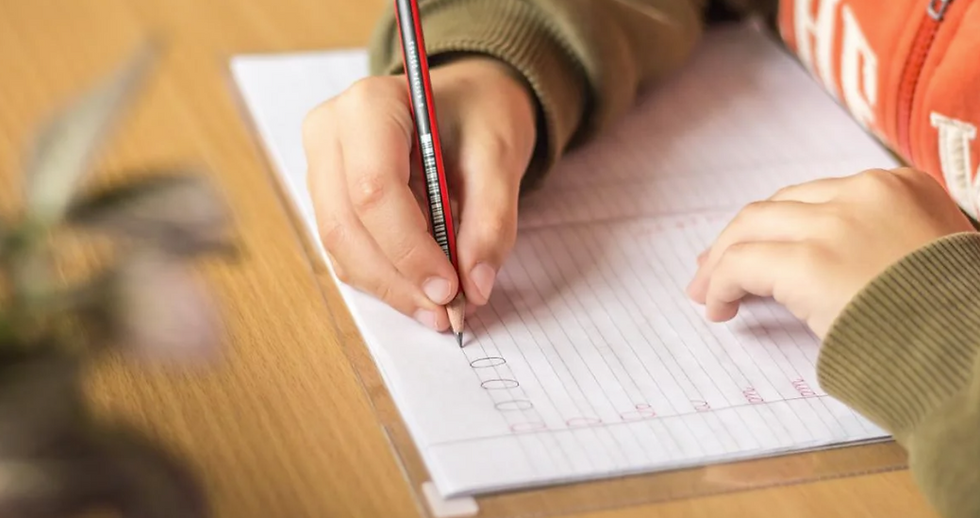“Handwriting activates areas of the brain linked to learning new information and memory retention, teaches organization skills and helps children compose their thoughts" Katy Jones, Nelson Mail
I was very pleased to hear the latest suggestion that primary school teachers should formally teach cursive writing. It’s not the writing in cursive style per se, but the structured approach where students will be taught how to hold a pencil and form the letters in a free and flowing style in the most efficient direction.

As a one on one maths tutor, I watch students hand write numbers for much of my working day. For several years I have noticed a marked decline in the ability of students to write numbers legibly and an increasing number have a clumsy awkward pencil grip. It seems like these students have been allowed to hold it any way they like, and not given formal direction on better grips which enable writing stamina. I suspect the increase in online maths learning programs where students simply tap their answer choice has greatly reduced their handwriting practice. (The extensive use of these programs is a topic for the next post!)
I try to keep in mind that my schooling was from last century and ask myself whether the way things are done (or not done) now makes a difference to student’s mathematics learning capability. But, my better judgement tells me it does.
As well as being an opponent of the hold the pencil any old way you like, I am also opposed to students learning to write numbers ”as they please”. I believe it is in the pre-school learning environment where students are given numbers to “reproduce” without formal instruction on the ‘standardised' way. Most numbers should be written from the top down. More and more students are writing numbers from the bottom up and several circular formed numbers that should be written anti-clockwise from the top are now written clockwise from the bottom. Some students form the same numbers different ways depending on their creativity on the day. So rather than automatically being able to write they are more focused on the way in which they will create their number!
More and more I am coaching students in the importance of writing legible numbers… “If the marker can't identify the number you have written, it will be marked incorrect even if you know in your mind that you got the right answer! Which makes me pause to think, how many of the students so called failing maths assessments is from illegible or ill constructed numbers! When I challenge a student about what they have written, it almost always works out the students can’t read their own writing!
Guidelines for Parents in helping young children learn to write their numbers and take pride in their work!

Zero – should be drawn from the top and anti-clockwise (the same as the alphabet “O”)
One - No “fancy” ones. Save those art based shapes for English Titles or Social Studies Projects. In maths, a simple vertical line is the most effective, quick to write and always understood.
Two – Most student do the two correctly but many are writing it from the bottom up.
Three – No issues, apart from the bottom up or lying down more than it should.
Four – Number four has always had varied versions but I have no issues with a four written either way.
Five - A Year 7 student began maths tuition last year, and the first thing I noticed was that the number 5 was written backwards every time. Had no one noticed? Had no one thought the student was capable of writing it “correctly”? Had others thought that it didn’t matter? Under my tutorage the student was writing 5 with the top going right to left and beautifully formed within three weeks. To make it fun, I called out phone numbers like 007 557 7557 and gave specific practice exercises, so that she practiced writing it correctly- the five is written right to let and the seven is written left to right.
Six – This is the same shape as the zero, starts at the top and curves anti clockwise, but curves in early on the other side.
Seven – Generally no issues.
Eight - Number eight is not written as two circles stacked on top of each other, but begins near the top as an anti-clockwise circle to curve around into a clockwise circle. How did “figure eight skating” get it’s name?
Nine – The instruction is “circle stick” with the circle being a small anticlockwise circle and the stick having a straight back! The bottom up with a curved back is also acceptable.
This article is in reference to
The same is true for mathematics learning!


Comments